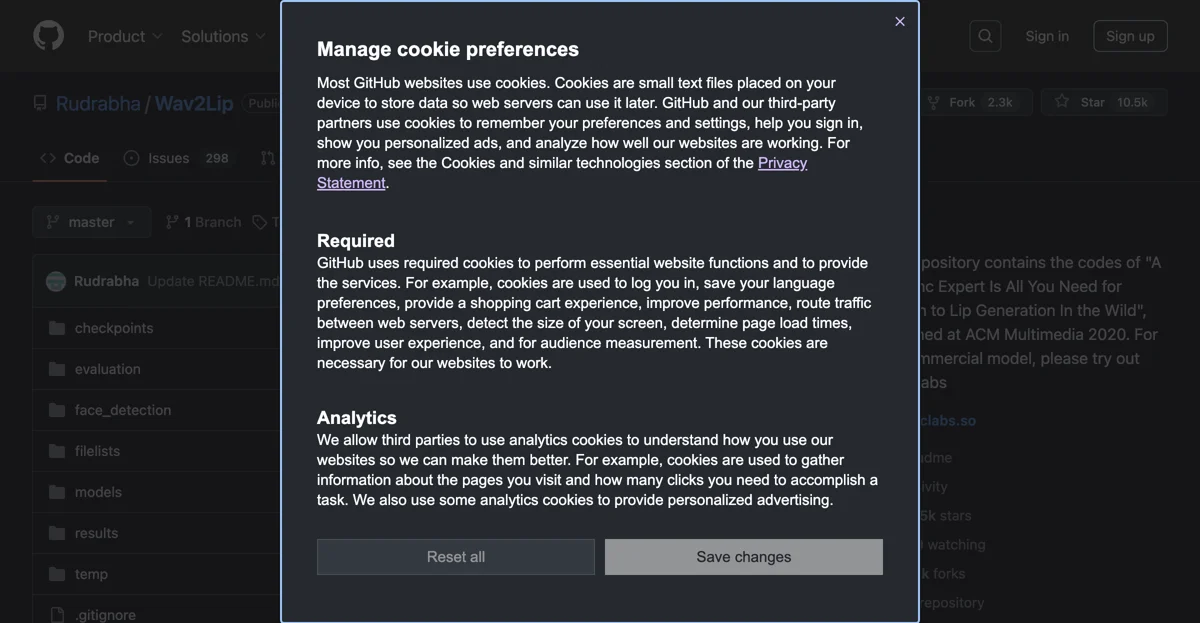Rudrabha/Wav2Lip: Revolutionizing Lip-Syncing in the Wild
Rudrabha/Wav2Lip is an advanced AI-powered tool that offers highly accurate lip-syncing capabilities for videos. This tool is hosted for free at Sync Labs and is a significant contribution to the field of speech to lip generation.
The code for this project is part of the paper 'A Lip Sync Expert Is All You Need for Speech to Lip Generation In the Wild' published at ACM Multimedia 2020. It comes with a range of features and capabilities that make it a valuable asset for various applications.
One of the key highlights of Rudrabha/Wav2Lip is its ability to lip-sync videos to any target speech with remarkable accuracy. It works for any identity, voice, and language, and also functions well with CGI faces and synthetic voices. The complete training code, inference code, and pretrained models are available, providing users with the flexibility to customize and apply the tool according to their specific needs.
To get started with Rudrabha/Wav2Lip, users need to meet certain prerequisites. Python 3.6 is required, and ffmpeg can be installed using sudo apt-get install ffmpeg. Necessary packages can be installed using pip install -r requirements.txt, and alternative instructions for using a docker image are also provided. Additionally, the face detection pre-trained model should be downloaded to the specified location.
The tool offers various options for lip-syncing videos using the pre-trained models. Users can specify the checkpoint path, the video file containing the face, and the audio source. The result is saved in a default location, but this can be customized as an argument. Tips for better results are also provided, such as experimenting with different arguments to adjust the detected face bounding box, avoiding over-smoothing of face detections, and experimenting with the resize factor to get a lower-resolution video.
For those interested in training the models, the repository provides detailed instructions. The models are trained on the LRS2 dataset, and the folder structure and preprocessing steps are clearly outlined. There are two major steps in the training process: training the expert lip-sync discriminator and training the Wav2Lip model(s). Instructions for both steps are provided, including options for using a pre-trained discriminator and training with or without the additional visual quality discriminator.
The repository also includes information on training on datasets other than LRS2, along with important considerations and potential challenges. Evaluation instructions are available in the evaluation folder, and the license and citation details are clearly stated.
Overall, Rudrabha/Wav2Lip is a powerful and innovative tool that has the potential to transform the way lip-syncing is achieved in videos, opening up new possibilities in various domains such as entertainment, education, and more.

